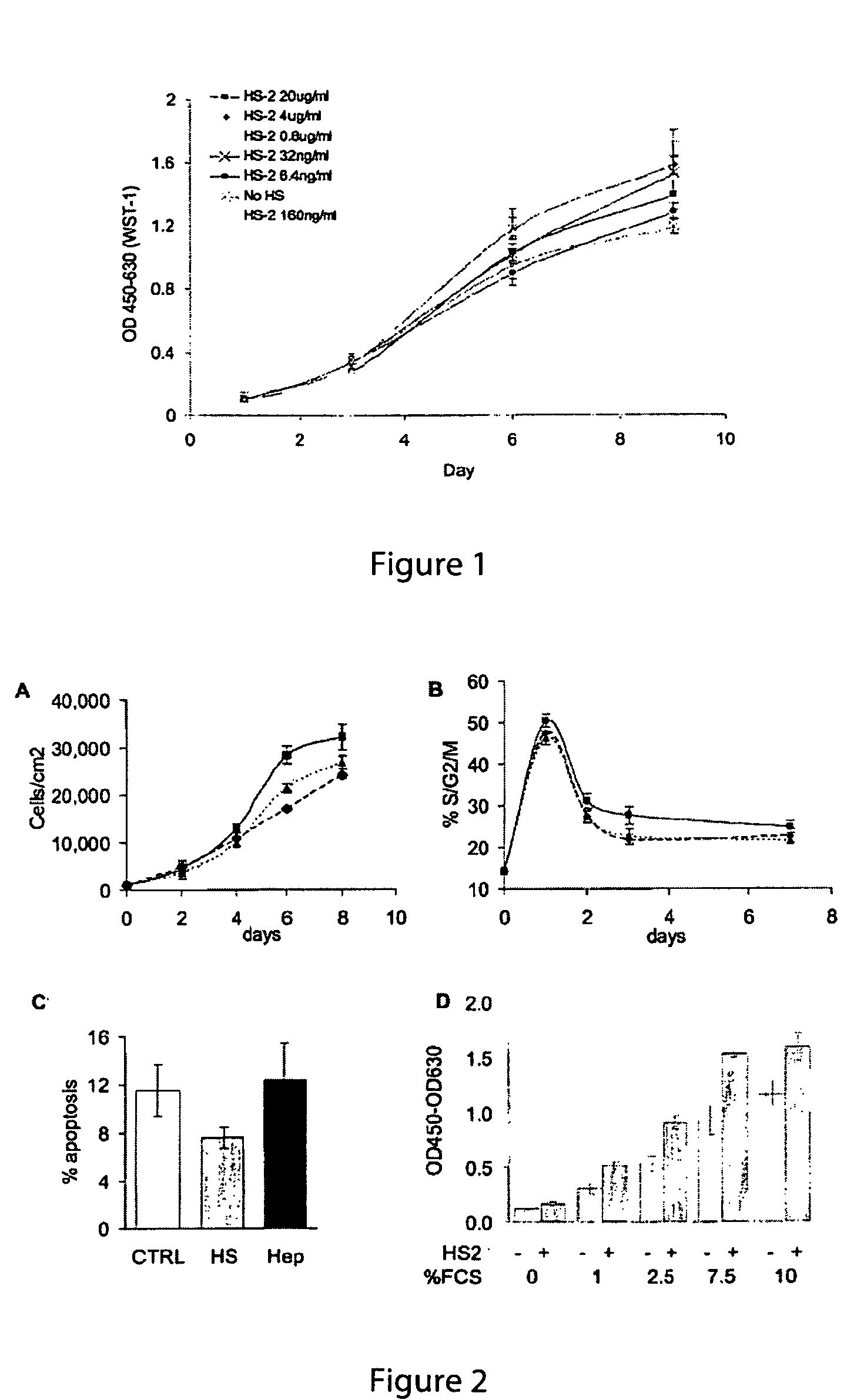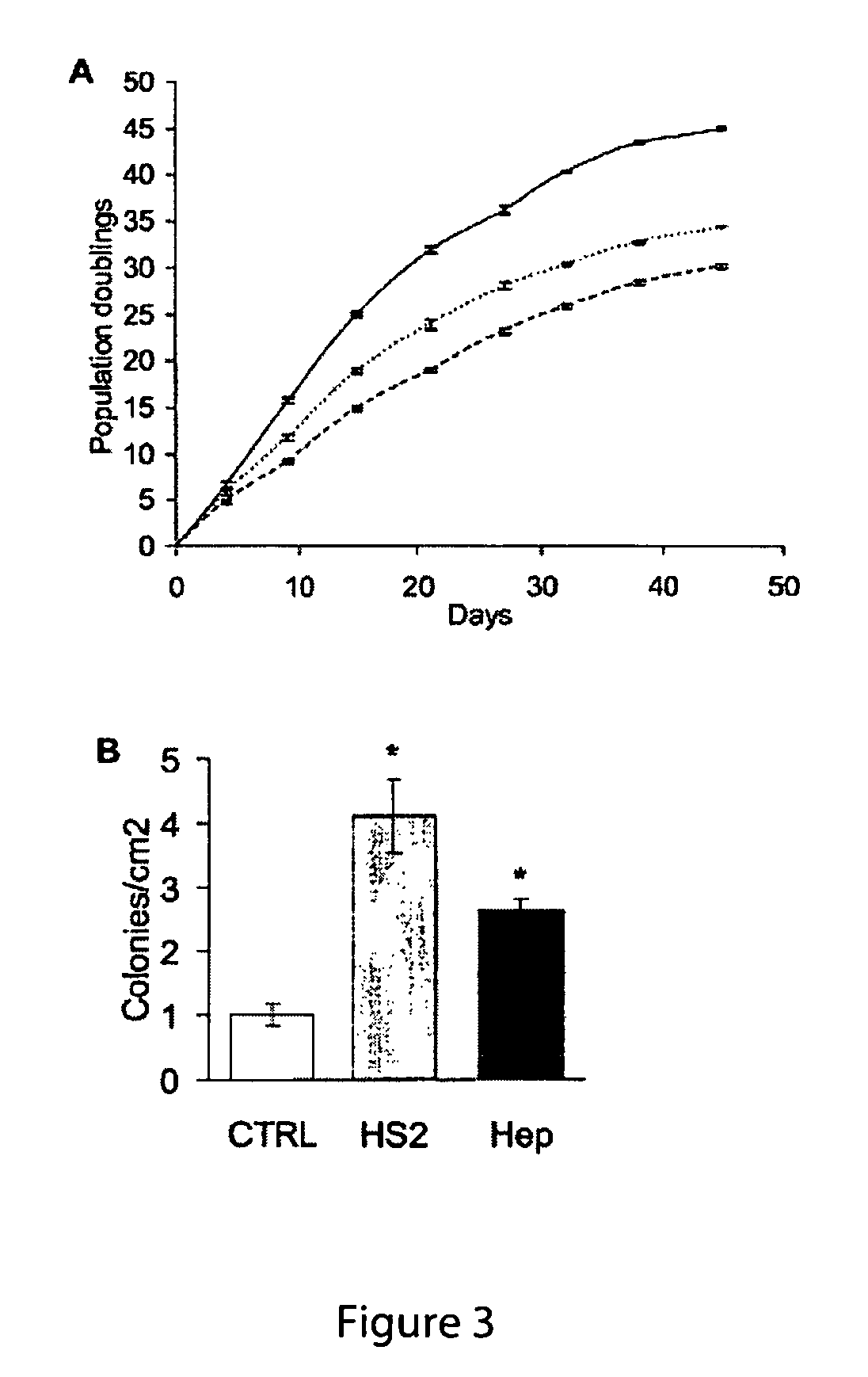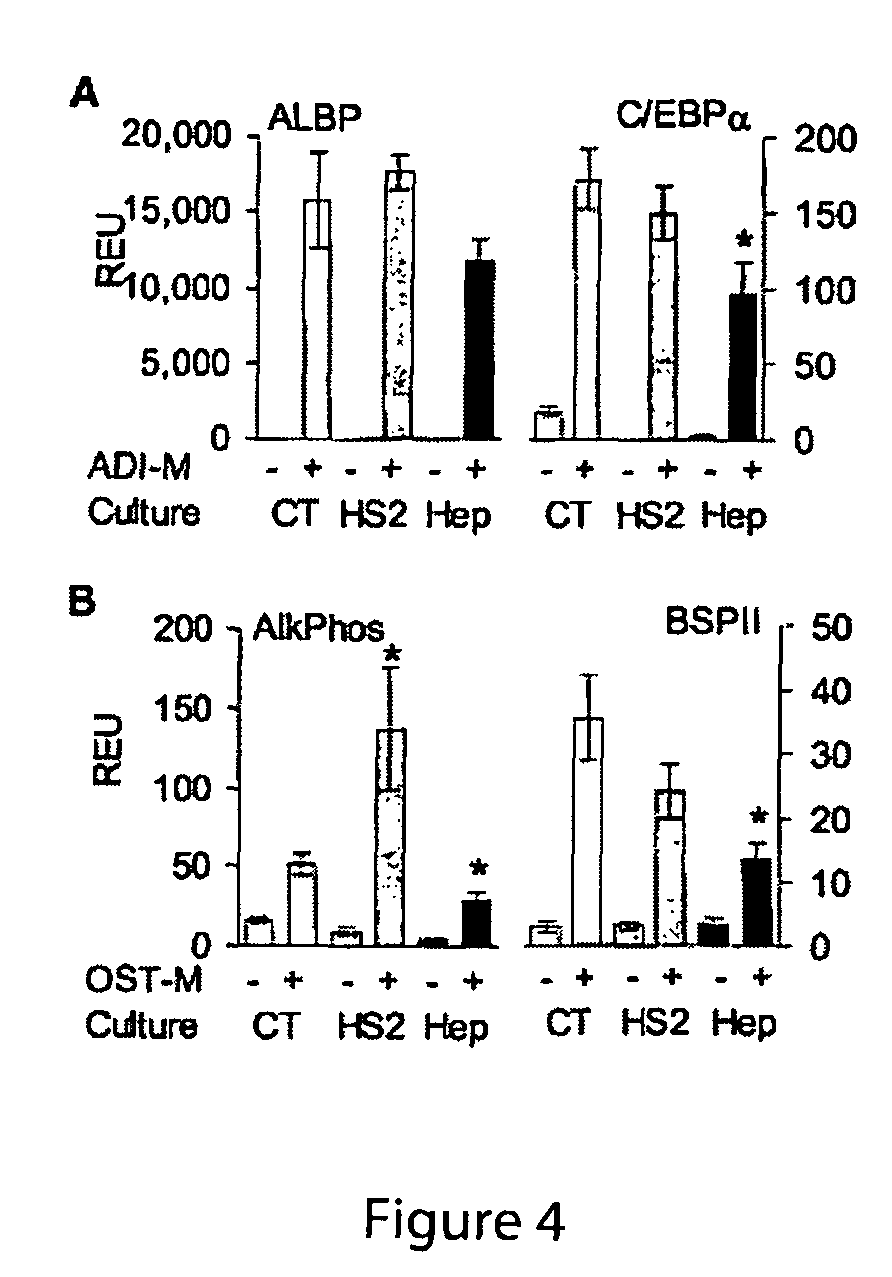Methods of culturing mesenchymal stem cells
a technology of stem cells and mesenchymal cells, applied in the field of stem cells, can solve the problems of reducing the number of stem cells, difficult to recreate the natural microenvironment, and hampered regenerative therapies using adult stem cells, and achieves a much faster expansion of stem cell culture, improved stem cell culture, and high cell proliferation rate
- Summary
- Abstract
- Description
- Claims
- Application Information
AI Technical Summary
Benefits of technology
Problems solved by technology
Method used
Image
Examples
example 1
[0160]To test the effect of specific heparan sulfate extracts on adult stem cell proliferation human mesenchymal stem cells (Poietics, Cambrex) were cultured in DMEM low glucose +10% fetal calf serum (FCS) (maintenance media) in the presence or absence of different concentrations of heparan sulfate 2. Cells were analyzed for metabolic activity by WST-1 assay (Roche). The results demonstrate that in one embodiment a HS2 concentration of about 160 ng / ml is the most mitogenic concentration and that higher doses are inhibitory (FIG. 1). Although 160 ng / ml appears to be the optimal concentration of HS2, HS2 was still effective to proliferate mesenchymal stem cells at concentrations ranging from 6.4 ng / ml to 20 μg / ml.
[0161]In short term culture, the (optimal) dose of 160 ng / ml increased the number of cells by 65% at sub-confluency (FIG. 2A, day 6) and part of this increase was due to a decrease in apoptosis (FIG. 2C), as determined by flow cytometric assays. However, most of this increase...
example 2
[0169]Therapies that seek to utilize adult human mesenchymal stem cells (hMSCs) are hampered by insufficient cell number with current ex vivo expansion methodologies leading to a loss of multipotentiality. Here we show that exogenous application of embryonic heparan sulfate sugar (HS-2) not only doubles the initial recovery of hMSCs from a bone marrow aspirate, but also increases the number of multipotent hMSCs by up to 13-fold during long-term expansion. Moreover, HS-2 acts to amplify a subpopulation of hMSCs harbouring longer telomeres and increased expression of the stem cell surface marker STRO-1. Gene profiling revealed that cells cultured in HS-2 possess a distinct signature that reflects their increased multipotentiality. Thus, HS-2 offers a novel means for decreasing the expansion time necessary for obtaining large numbers of mesenchymal stem cells without the addition of exogenous growth factors that compromise stem cell fate.
Materials and Methods
Cell Culture
[0170]Primary h...
PUM
| Property | Measurement | Unit |
|---|---|---|
| culture time | aaaaa | aaaaa |
| culture time | aaaaa | aaaaa |
| culture time | aaaaa | aaaaa |
Abstract
Description
Claims
Application Information
 Login to View More
Login to View More - R&D
- Intellectual Property
- Life Sciences
- Materials
- Tech Scout
- Unparalleled Data Quality
- Higher Quality Content
- 60% Fewer Hallucinations
Browse by: Latest US Patents, China's latest patents, Technical Efficacy Thesaurus, Application Domain, Technology Topic, Popular Technical Reports.
© 2025 PatSnap. All rights reserved.Legal|Privacy policy|Modern Slavery Act Transparency Statement|Sitemap|About US| Contact US: help@patsnap.com



